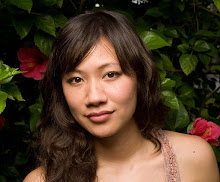During my tour of Bukittinggi, a mountain town in West Sumatra, I learn just how different Indonesia is even apart from Southeast Asia. The indigenous Minangkabau people have a matrilineal and Muslim culture. My guide, a self-proclaimed jungle man, asks me what I think about a man having more than one wife. He presents this hypothetical scenario: a female friend’s husband dies, and she has many children. The family is poor. Who will take care of them? If his current first wife is a good and generous woman, she will allow him to marry this friend, so he is obliged to financially care for that family.
Dhany also tells me fascinating stories about spending two years learning to eat fire and Indonesian karate in which one ultimately faces a wild tiger. Part of the programs he offers to tourists includes a chance to meet one. It requires travelers camping five days in the jungle. Meanwhile, he will get in touch with a “magic man” who has relationships, or connections (if you will) with the tigers. The magic man can tell if the animal is feeling aggressive or friendly. When the tiger is ready for socializing, the magic man will let you know, and you can touch, pet, even hug it. Unfortunately, it is my second day in Indonesia -- and I am already running out of time -- so I opt to visit bats and buffalo in the Sianok Canyon and trek through jungle surrounded by 10 to 30 feet trenches in complete darkness (Ok, that was unplanned, but I survive.)
Coincidentally, my new jungle friend recently married an American -- from Houston -- from the town of Clear Lake where I attended high school! He may move to Texas. He says I am family now; I know his town. He pours kopi (coffee) from the teacup onto a curved dish. As he takes a sip from the dish, I imagine Dhany doing this at Starbucks. Can he adjust to American life? I am astounded by the possibilities.
Many travelers consider Indonesia too developed, too "touristy" therefore discount it, but to scratch it off is a mistake. There is a reason the country is a premier destination -- spectacular scenery, exotic cultures, friendly people, and delicious cuisine. It’s the best of Southeast Asia in one (albeit huge) country. As a backpacker, Indonesia is more expensive (by Southeast Asian tourist standards), but one must simply bargain harder and politely. I only visited Sumatra, Java, and Bali, but I hope to return to Sumatra and the other islands I didn't have time for.
I am back in the U.S. now and am adjusting myself. I plan to continue blogging. I spent 10 days in Bali, so a separate post will come shortly. And, I know you all are hungry for a post on food (pun intended), how to bargain, what I got out of my travel experience, and more!
Click here for more Indonesia photos.
Smoking Ijen volcano in East Java.

Locals carry 80-plus pounds of sulfur from the opaque teal crater down the volcano daily.

I thought I died and went to heaven when I saw the shimmering vast crater lake, Minanjau.

My guide Dhany in the beautiful mountain town of Bukittinggi in West Sumatra. He may be moving to Houston to be with his wife who is a professor in town.

Rice paddies, a mosque, and village in Bukittinggi.

Me on Dhany's Texas-themed motorbike. Yeehaw!

The bizarre Rumah Gadang architecture found in Sumatra (pictured here in Koto Gadang famous for its silver jewelry.)

For my birthday, I visited two volcanoes during sunrise: Gunung Bromo (below) and Ijek both in Java.

Gunung Bromo up close during an a once-a-year Indonesian holiday.

As the Lonely Planet guide described so well, a sense of an end-of-the-world feel at Gunung Bromo.

A different, desolate view of Bromo.

Clouds always seem to sit on the horizon in Indonesia -- one of my favorite scenes especially during sunrise and sunset. (Mountain adjacent to Bromo.)

This machinery utilizes buffalo power to press sugarcane.

On a bus ride through the jungle to Ijen.

Most touristed attraction in Indonesia, Borobudur temple (UNESCO World Heritage site) in Java.





































